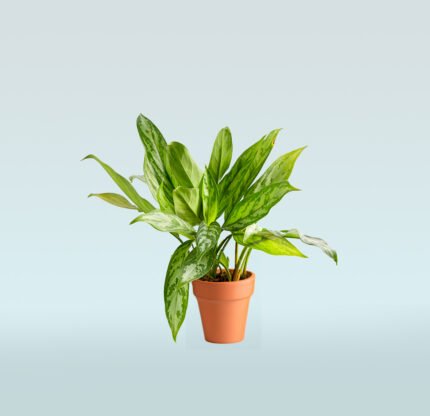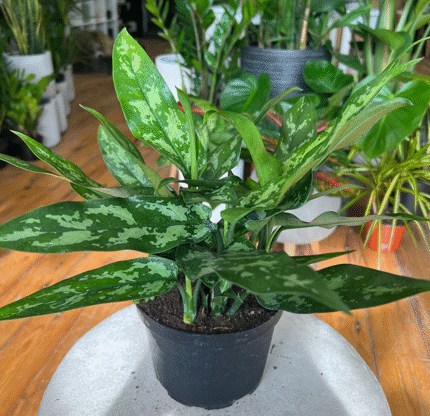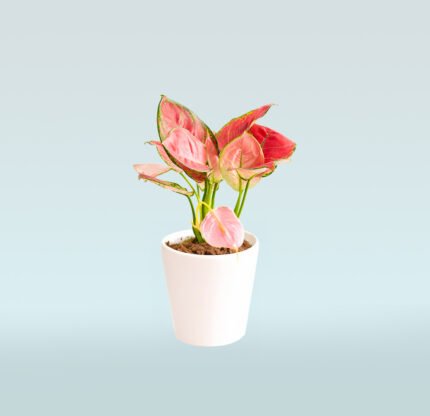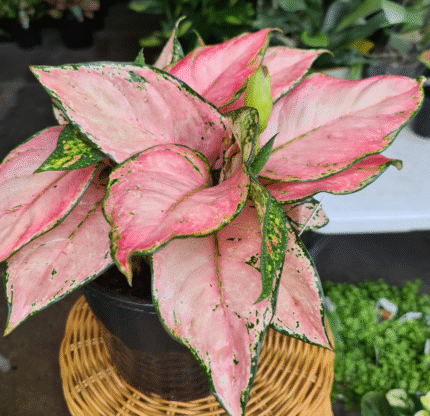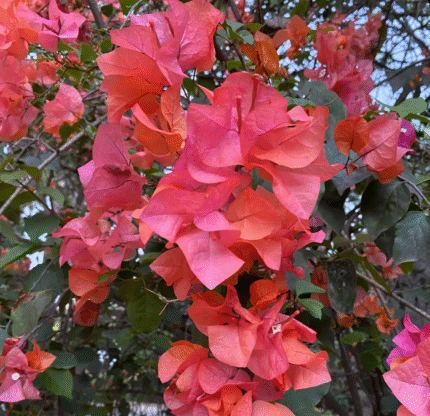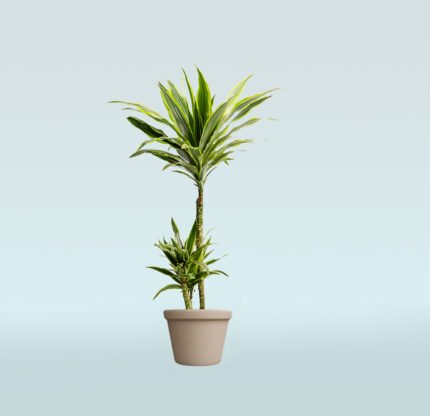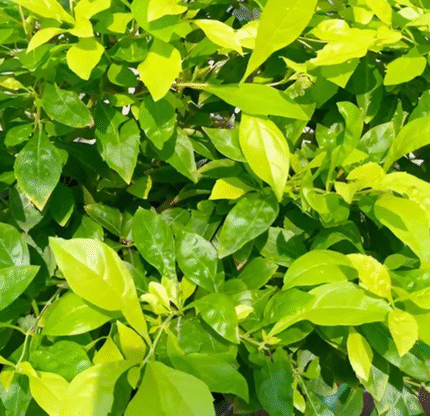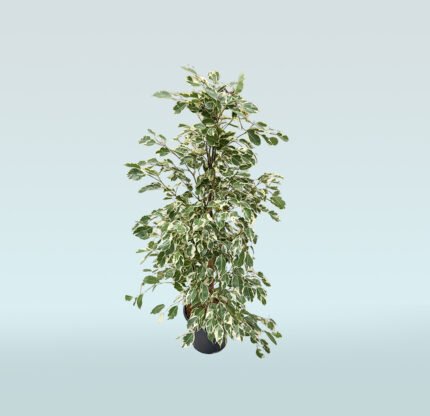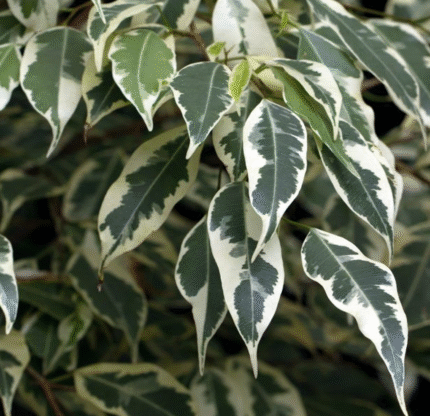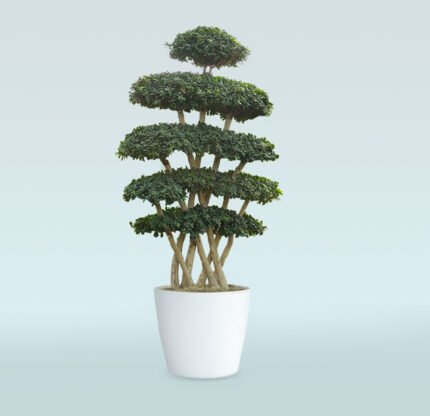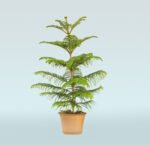
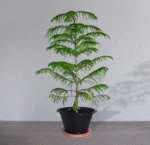

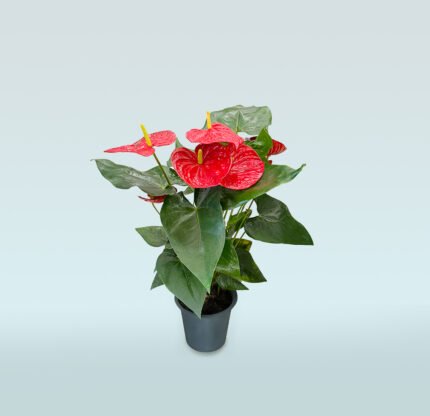
Araucaria Heterophylla
AED 140.00 – AED 220.00Price range: AED 140.00 through AED 220.00
The images are merely meant to serve as references. Depending on factors like size, age, season, etc., the actual product may differ in form or appearance.
Description
The Araucaria tree is a fascinating and unique genus of evergreen trees. These trees are known for their striking appearance, with symmetrical, dense branches that radiate from the trunk in a pattern often compared to a whorl or a spiral. The name “Monkey Puzzle Tree” refers to how difficult it would be for a monkey to climb because of the sharp, spiky needles that cover the branches.
Key Information About Araucaria Tree Plant:
1. Species and Varieties:
- Araucaria araucana (Monkey Puzzle Tree): This species is the most iconic and is native to the Andes in Chile and Argentina. It is well-known for its unique shape and sharp, triangular leaves.
- Araucaria heterophylla (Norfolk Island Pine): A more widely planted species, particularly in tropical and subtropical areas. Native to Norfolk Island, it has a more upright, slender shape, and is commonly seen as an ornamental tree in coastal areas.
- Other species: There are several other species of Araucaria that grow in various regions, including Australia and New Guinea, such as Araucaria bidwillii (Queensland Pine).
2. Physical Characteristics:
- Height: Araucarias can grow very tall, depending on the species. For example, Araucaria araucana can reach up to 50 meters (164 feet) in its native habitat but typically grows to around 20-30 meters (66-98 feet) when cultivated in gardens. A. heterophylla can also grow tall, but in managed environments, it is often smaller.
- Trunk and Branches: The tree’s trunk is usually straight and thick, and the branches are arranged in whorls, giving the tree a symmetrical, tiered look. The leaves are stiff, pointed, and scale-like, making them appear quite rugged.
- Needles: The leaves (needles) of the Araucaria tree are a key feature, usually spiny, sharp, and glossy. These dense, triangular leaves make the tree look somewhat prehistoric.
3. Growing Conditions:
- Climate: Araucarias prefer temperate climates and generally thrive in cool, moist environments. They are not tolerant of hot, dry conditions or extreme frost.
- Soil: Well-drained, slightly acidic soil is ideal for these trees. They do not do well in wet or waterlogged soils. They can tolerate some drought but are generally better in more consistently moist soils.
- Sunlight: Full sunlight is preferred, though Araucarias can tolerate some partial shade, especially when young.
4. Maintenance:
- Watering: Araucarias prefer consistent moisture, especially in dry periods. However, the soil must be well-draining to avoid root rot.
- Pruning: Regular pruning is not typically necessary, though it can be done to remove dead or damaged branches. These trees do not require much maintenance once established.
- Growth Rate: The trees have a relatively slow growth rate, particularly in the first few years, but once they are mature, they can grow rapidly.
5. Uses:
- Ornamental: Araucarias are primarily used as ornamental trees due to their striking appearance and unique form. The Norfolk Island Pine (A. heterophylla) is often used as a Christmas tree in tropical regions due to its symmetrical, conical shape.
- Timber: Some species of Araucaria, particularly A. araucana, are used for timber, though it is often protected due to over-harvesting concerns in some areas.
- Cultural Significance: The seeds of the Araucaria araucana are a significant food source for indigenous people in southern Chile and Argentina.
6. Challenges:
- Space: Given the size of these trees, they need ample space for both their roots and their tall stature. This makes them more suited to large gardens or public parks.
- Slow Growth: While Araucarias are long-lived, they tend to grow slowly, especially when young, and may take several years to show significant height or structure.
- Pests: While these trees are relatively pest-resistant, they may occasionally experience issues with pests such as scale insects or fungal diseases in humid environments.
7. Toxicity:
- The seeds of some Araucaria species are toxic to humans if ingested, especially when raw. While the tree itself is not toxic, caution should be taken to ensure small children or pets do not ingest the seeds.
8. Lifespan:
- Araucarias are long-living trees, with some species living for several centuries, particularly the Monkey Puzzle Tree (A. araucana), which can live for over 1,000 years in its native habitat.
Conclusion:
The Araucaria tree is a stunning and unique addition to any garden or landscape where space permits. Whether you opt for the Monkey Puzzle Tree or the Norfolk Island Pine, these trees offer a dramatic and striking appearance, making them ideal for ornamental purposes. They do require attention to their growing conditions, particularly regarding sunlight and moisture, but once established, they can be relatively low-maintenance, long-living specimens.
Additional information
| Pot | , , , |
|---|---|
| Plant Size |



